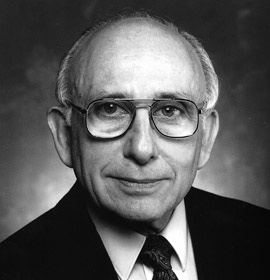
Early Childhood:
Norman Joseph Woodland was born in Atlantic City on Sept. 6, 1921. As a young child he was involved in the Boy Scouts. It is within this program that he began to learn and understand Morse Code, which will later become critical.
Undergraduate Studies, Elevator Music & Parental Influence:
Later in life during World War II, Woodland worked on the United States’ Manhattan Project at Oak Ridge National Laboratory in Tennessee. Following this, Mr. Woodland resumed his undergraduate studies at the Drexel Institute of Technology in Philadelphia (Drexel University), earning a bachelor’s degree in mechanical engineering in 1947. To much surprise, Norman Woodland utilized his early academic research to develop a better system for delivering – wait for it – elevator music more efficiently. His system recorded 15 simultaneous audio tracks on 35-millimeter film stock and was much less cumbersome than existing methods such as LPs and reel-to-reel tapes. His system was successful enough that he planned to pursue the project commercially, but his father forbade it. Mr. Woodland grew up around organized crime and always feared it; he insisted that elevator music was somehow controlled by the mafia and that his son would have no part in it.
Graduate Studies & Early Partnership:
Due to his father’s influence, Mr. Woodland eventually returned to Drexel to pursue a master’s degree. In 1948, a local supermarket executive visited the campus and implored a dean to assist with developing a new and efficient way of encoding product data. The dean thought nothing of it, but Mr. Silver, a fellow graduate student who overheard their conversation, was intrigued. He conscripted Mr. Woodland and the two began working on prototype systems shortly after.
An early idea of theirs involved printing product information in fluorescent ink and reading it with ultraviolet light, but this system proved unworkable in long-term situations due to the fading of ink.
Norman was still convinced, though, that a solution was close at hand. He became so passionate about and confident in it that he quit graduate school to devote himself entirely. Woodland moved to his grandparents’ home in Miami Beach, where he spent the winter of 1948-49 drawing lines in the sand…
References:
- Fox, Margalit. “N. Joseph Woodland, Inventor of the Bar Code, Dies at 91.” The New York Times, The New York Times, 13 Dec. 2012, 8www.nytimes.com/2012/12/13/business/n-joseph-woodland-inventor-of-the-bar-code-dies-at-91.html?hp.
- “Woodland Obit.” DrexelNow, Drexel University, 18 Dec. 2012, drexel.edu/now/archive/2012/December/Woodland-obit/.
Resources:
- Channel 4 News Story on the Passing of Woodland and His Importance: https://youtu.be/KnK2QoAH6wQ
